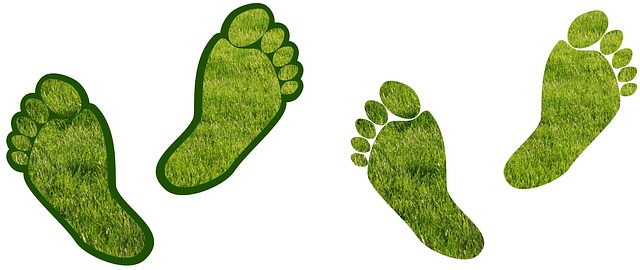While making visits to national parks or forest preserves, you’ll often be told to “leave nothing but footprints.” This is always a good policy in these types of situations. However, we often forget, or simply do not know that wherever we go, we actually leave two sets of footprints. Your physical footprint is, for the most part, a harmless indentation left behind wherever you step. Your other footprint is what is known as your carbon footprint, essentially the level of greenhouse gases your lifestyle and activity emit into the environment. We’d like to help you understand not only what your carbon footprint is, but also how to measure it and identify some simple ways to reduce it and to save energy.
Your Carbon Footprint: What Is It?
By definition, a carbon footprint is “the total set of greenhouse gas emissions caused by an organization, event, product, or person.” This means that if you live a lifestyle that requires the use of a greater amount of energy and fossil fuels that form greenhouse gases through combustion, the larger your impact on the environment and your carbon footprint will be. Often people consider their carbon footprint to be the result of their immediate use of fossil fuels and energy usage, like cooking with natural gas or using petroleum to run their automobile. However, your carbon footprint consists of many activities that can be far less obvious. This may include the fossil fuels used to transport the food that you buy at your local grocery store, or the energy used to dispose of the waste produced in your household. All this comes into account when trying to make an accurate estimate of what impact is left behind by your daily activities and choices.
How to Measure Your Carbon Footprint?
Perhaps not surprisingly, the U.S. has one of the largest carbon footprints in the world, ranking #2 in total emissions (other countries near the top include China #1, India #3, Russia #4 and Japan #5) but #1 in emissions per capita. Since this much larger footprint is made up of many much smaller individual footprints, it is important to understand your contribution and responsibility to the greater whole. Individually, the average American produces 9.44 tons of carbon dioxide on their own each year! Did this surprise you? The link below will help you to calculate the size of the carbon footprint of your household: http://www.epa.gov/climatechange/emissions/ind_calculator.html.
How to Reduce Your Greenhouse Gas Emissions?
Taking small steps to reduce your carbon footprint and saving energy is actually fairly simple. Here is a list of some easy things that you can do to live a more environmentally healthy lifestyle.
– Limit Consumption of Bottled Water – The production, consumption and disposal of bottled water leaves a rather significant carbon footprint. It requires the combustion of fossil fuels to make the bottle, transport it, and dispose of it if it’s not recycled. In-house filtration systems can reduce your impact and cost for water.
– Unplug Appliances That Are Not Frequently In Use – Most of these items have a standby mode that wastes energy even when they’re not in use. Unplugging is the best way to ensure that unnecessary energy is not lost. With a powerstrip, you can even switch off more than one appliance at once.
– Use Cold Water – No, I’m not suggesting that you start taking cold showers. Using colder water to wash clothes that do not require a hot water wash is a great way to reduce your carbon footprint. While washers already require a lot of energy to run, it takes even more to heat the water. Using cold water whenever possible can make a big difference and will increase your energy saving.
– Recycle And Reuse – Recycling uses a lot less energy since it is reducing the greenhouse gas emissions that would come out of creating a completely new product.
– Upgrade The Energy Efficiency Of Your Home – New energy efficient light bulbs, filters, and appliances could have a massive impact in reducing your carbon footprint. Less energy used means less greenhouse gas emissions. Even just maintaining and taking care of the appliances and products you already own can ensure a smaller footprint without spending a lot of money. You can measure the energy efficiency of your home and your potential energy savings at www.energyresults.com.
With easy steps like these, you are on your way to increasing your energy savings and reducing the size of the carbon footprint left behind. We all have a role in trying to shrink the adverse impact we have on the environment, not only as an individual, but also as a member of a household, as a citizen of a country, and as an inhabitant of planet earth.





